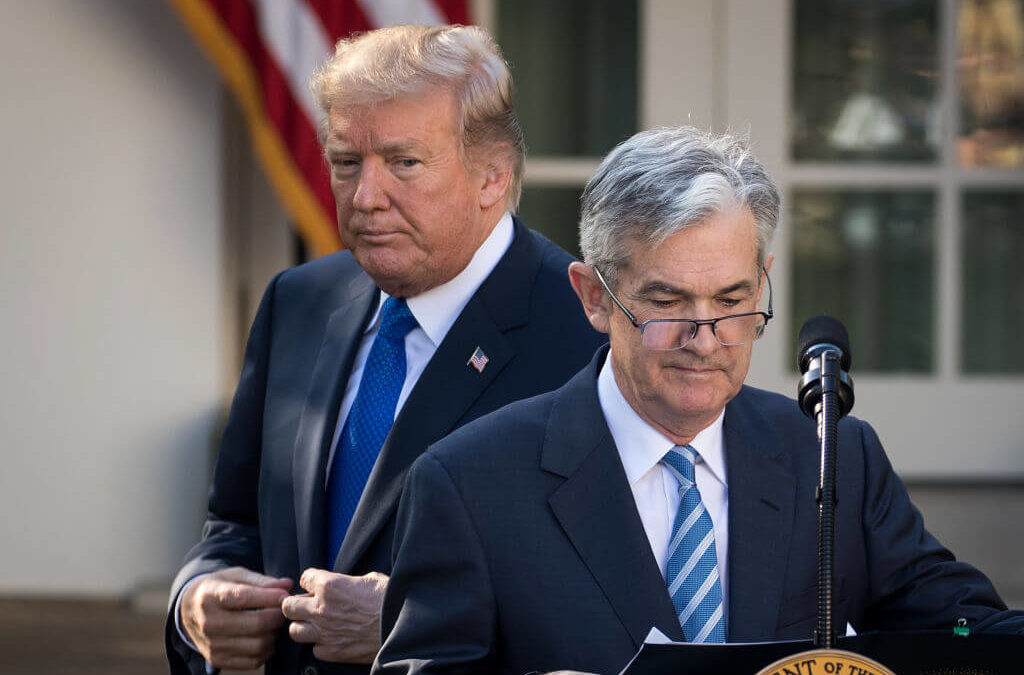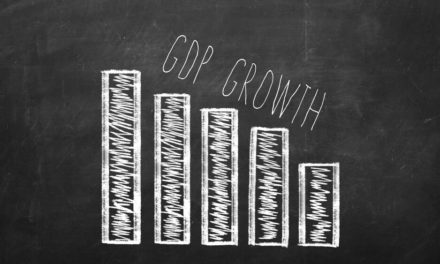The Federal Reserve and Chair Jerome Powell are supposed to set interest rates based on gauges of inflation and employment. But President Donald Trump has injected a wild card into the mix with his trade wars and tariffs on imports. The resulting economic uncertainties, Powell said, had significantly influenced the Fed’s decision to cut rates.
“The Fed is reacting to the fallout from the trade war and, more importantly, the uncertainty created by the trade war.”
“Trade is unusual,” Powell told reporters at a news conference Wednesday. “There isn’t a lot of experience in responding to global trade tensions. So it is something that we haven’t faced before and that we are learning by doing.”
Powell’s mission grew even tougher after Trump announced plans Thursday to impose a 10% tax on $300 billion of Chinese imports, meaning that virtually all Chinese goods would be tariffed beginning in September. The president’s move might have been predicated, in part, on his confidence that Powell’s Fed stands ready to cut rates again. The bond market signaled its belief in that theory, with Treasury yields dropping sharply after Trump’s announcement.
The problem is that cutting loan rates — especially when they’re already low — isn’t likely to ease uncertainties from a prolonged trade conflict. What rate cuts can do is help insulate other parts of the economy from trade disruptions and support the stock market.
A survey by the American Chamber of Commerce in South China has found that U.S. manufacturers suspended nearly half their investment projects valued above $250 million because of uncertainty in U.S.-China trade relations. Powell acknowledged that some companies have delayed investments because of the tariffs. But he didn’t make a case for why a rate cut might cause some of them to reverse course.
“In the big scheme of things, interest rates are not driving the manufacturing economy,” said Timothy Fiore, chair of the Institute for Supply Management’s manufacturing survey committee. “Trade issues are driving the manufacturing economy.”
He added: “I don’t think the interest rate cuts are going to help a lot here. My opinion is that the reason the manufacturing economy has slowed is because of tariffs.”
Yet Trump has attacked the Powell Fed for months, mostly in angry tweets, for what he’s called its tight-fisted policies. The president has demanded that the Fed, an independent agency, aggressively slash rates to try to boost the economy and the stock market under his watch. And he’s mused publicly about demoting Powell.
Through it all, Powell has remained outwardly unflappable and insisted that the Fed pays no mind to political or other outside influences. But with his tariffs, Trump seems to have produced a pressure point that helped force a Fed rate cut at a time when, as Powell put it, the U.S. economy has been “reasonably good.”
“The Fed is reacting to the fallout from the trade war and, more importantly, the uncertainty created by the trade war,” said Mark Zandi, chief economist at Moody’s Analytics.
In his news conference, Powell mentioned “trade” 26 times. He said the Fed wasn’t being critical of the president’s trade agenda. He was merely observing that the risks created by Trump’s aggressive import taxes — which have triggered counter-tariffs by the targeted countries — were a key reason to cut the Fed’s key interest rate to try to help sustain the economic expansion.
“Trade policy tensions nearly boiled over in May and June but now appear to have returned to a simmer,” Powell said.
To be sure, other, more conventional factors played a role in the Fed’s decision to cut rates Wednesday — a move that Powell characterized as “a bit of insurance” to help sustain the longest U.S. expansion on record. Weak global growth and inflation that remains persistently below the Fed’s target level were also factors in cutting the benchmark rate by a quarter-point to a range of 2% to 2.25%.
The central bank also announced that it would stop shrinking its enormous bond portfolio in August, two months earlier than previously planned. This is intended to help keep long-term borrowing rates low for consumers and businesses.
Even so, the Fed’s action Wednesday, far from pleasing the president, angered him. Trump took to Twitter to argue that the Fed should have announced an extended campaign of rate-chopping.
“As usual, Powell let us down,” the president said of his own choice to lead the Fed.
Trump has imposed tariffs on imported steel and aluminum as well as hundreds of billions’ worth of goods from China, mused about slapping tariffs on European autos and threatened tariffs on Mexico as a way to reduce crossings on the U.S. Southern border. Polling shows such moves have been seen by companies and consumers as hazards for economic growth.
The Fed’s decision to cut rates in part to defuse those pressures showed that Trump can influence the Fed — if not through public hectoring then through his tariffs, said Sarah Bloom Raskin, who formerly served with Powell on the Fed’s board.
“The risk with this rationale is that the president now knows how to force the Fed to action,” Raskin said. “It just keeps trade tensions and uncertainties high whenever he wants the Fed to act. This would essentially give the president the lever he needs to control the Fed.”
Raskin added, “Should this happen, and be understood to be happening, the Fed would suffer a credibility issue which could have the effect of producing poor economic outcomes.”
The situation has made it harder for Powell to say whether or why the Fed might cut rates in the future. On Wednesday, the chairman seemed unwilling to embrace the likelihood of future cuts in an environment where rates worldwide are already ultra-low.
Stocks sank during Powell’s remarks. The markets had been anticipating two or three additional rate cuts this year. Pressed on the issue, the chairman seemed to struggle to articulate the Fed’s strategy.
“What I said was it’s not the beginning of a long series of rate cuts,” he said. “I didn’t say it’s just one (cut) or anything like that.”
The somewhat hazy message illustrated the challenge in explaining Fed policy at a time when Trump’s trade wars have clouded the economic picture.
Diane Swonk, chief economist at Grant Thornton and a longtime Fed watcher, said the confusion stems from Powell being forced to set policy based on possible missteps by the Trump administration rather than on underlying economic fundamentals.
“Chaos begets chaos instead of clarity,” Swonk tweeted Thursday.
© The Associated Press. All rights reserved.




